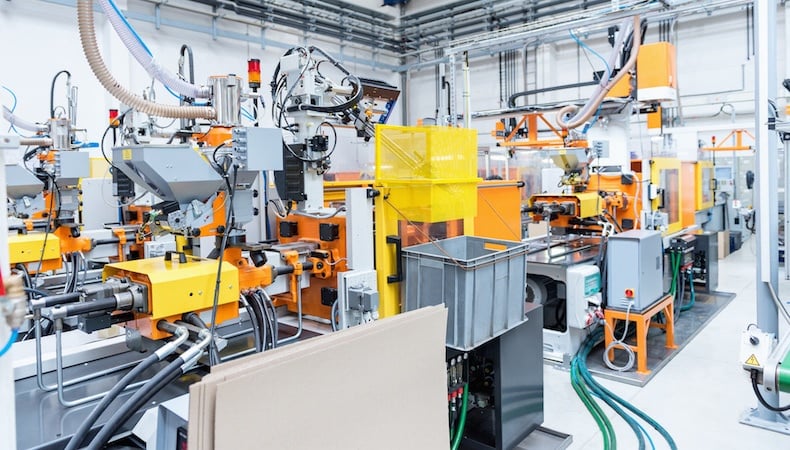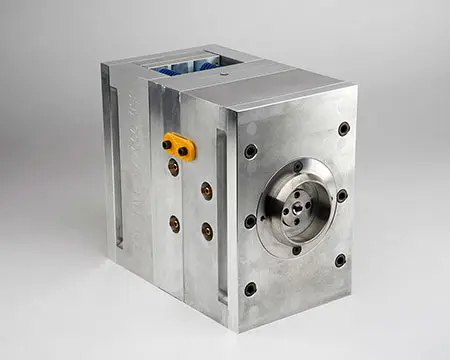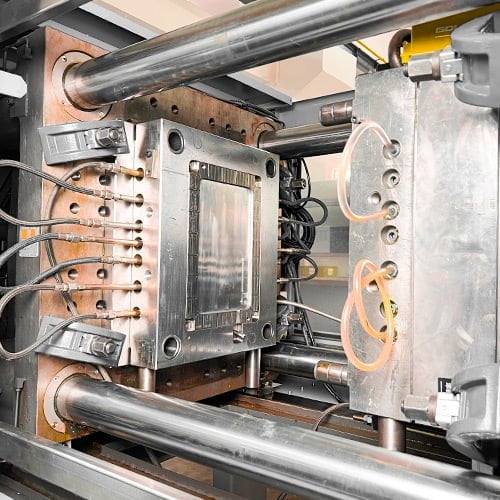Why Plastic Injection Molding Is Crucial for Precision and Resilience
Why Plastic Injection Molding Is Crucial for Precision and Resilience
Blog Article
Recognizing the Essentials of Plastic Injection Molding Processes
Plastic injection molding offers as a keystone of modern-day production, providing a methodical method to generating complex elements with precision. Discovering these crucial aspects could expose just how even minor changes can lead to considerable enhancements in manufacturing end results, increasing inquiries concerning the possibility for innovation in this well established procedure.
What Is Plastic Injection Molding?
Plastic injection molding is a widely made use of production process that transforms thermosetting and thermoplastic materials right into specific and complicated forms. This strategy is favored for its capacity to generate high quantities of similar parts with exceptional precision, making it an essential approach in different sectors, including auto, customer items, and medical gadgets.
The procedure includes melting the selected plastic product and infusing it into a mold under high stress. The mold and mildew, designed to the specs of the wanted part, allows the molten plastic to form as it cools and strengthens. Once the product has actually solidified, the mold and mildew is opened up, and the completed element is ejected.
Plastic shot molding uses numerous advantages, consisting of reduced waste, uniformity in manufacturing, and the capability to incorporate intricate designs that might be testing with other manufacturing methods. Furthermore, it sustains a broad variety of materials, each offering distinct residential properties that can be tailored for certain applications. As markets remain to introduce, plastic shot molding continues to be at the center, allowing the development of innovative items that fulfill advancing customer needs.
The Shot Molding Process
The shot molding procedure is an innovative strategy that involves several crucial phases to produce high-quality plastic parts. At first, plastic pellets are fed into a warmed barrel where they are merged a thick fluid. This molten plastic is after that infused under high stress into a precision-engineered mold and mildew, which shapes the product into the wanted kind.
As soon as the mold and mildew is filled, the plastic is enabled to cool and solidify, taking the form of the mold cavity. Air conditioning time is important, as it influences the cycle time and the last residential or commercial properties of the shaped component. After enough air conditioning, the mold and mildew opens up, and the finished component is ejected utilizing ejector pins.

Materials Used in Shot Molding
Various materials can be used in the shot molding procedure, each offering unique buildings that accommodate details applications. The most typically made use of materials consist of thermoplastics, thermosetting plastics, and elastomers.

Thermosetting plastics, like epoxy and phenolic materials, go through a chemical modification during the healing procedure, leading to an inflexible, inflexible structure. These products are optimal for applications requiring high warm resistance check out this site and architectural stability, typically utilized in automotive parts and electrical insulators.
Elastomers, including silicone and rubber-based products, give flexibility and durability. Their one-of-a-kind properties make them suitable for applications that require elasticity, such as seals and gaskets.
Furthermore, specialized products like bio-based plastics and compounds are obtaining traction for their environmental benefits and boosted efficiency features, broadening the scope of shot molding applications in various markets. Understanding the residential or commercial properties of these products is vital for choosing the suitable kind for certain projects.
Advantages of Shot Molding
Injection molding stands apart as a highly effective production procedure that offers numerous benefits for producing complicated parts with precision. Among the most substantial benefits is the ability to moved here create elaborate layouts that would certainly be impossible or tough to achieve with other approaches (Plastic Injection Molding). The process permits limited resistances and detailed functions, making certain premium elements
In addition, shot molding is known for its fast manufacturing capabilities, making it an ideal selection for high-volume manufacturing. Once the mold and mildew is created, components can be created quickly, lowering lead times and increasing general productivity. This performance not only decreases production prices but additionally offers an affordable edge in the market.
The convenience of materials utilized in shot molding additionally enhances its charm. A vast array of thermoplastics and thermosetting polymers can be used, allowing makers to select materials that ideal meet their certain requirements, including adaptability, heat, and stamina resistance.
Furthermore, the procedure decreases waste, as excess material can typically be reused and recycled. This sustainability facet adds to a minimized ecological influence, making injection molding a responsible manufacturing option. Generally, basics the advantages of injection molding make it a favored approach for several sectors.
Factors Affecting Product High Quality
While many variables can affect item top quality in shot molding, recognizing these elements is essential for achieving optimal results. Key aspects include material selection, refining criteria, and mold and mildew layout.
Product choice plays a crucial function, as various polymers show unique buildings that influence flowability, toughness, and thermal security. Insufficient material choice can bring about issues such as bending or insufficient dental filling.
Processing specifications, consisting of stress, cycle, and temperature time, should be carefully controlled. Variants in these setups can lead to inconsistencies partially measurements and surface coating. As an example, excessively heats might trigger degradation of the polymer, while poor pressure can cause brief shots.
Mold and mildew style is equally vital, as it identifies the flow of the molten plastic and the cooling procedure. Badly made mold and mildews might cause uneven air conditioning rates, causing dimensional errors and residual tensions.

Final Thought
Finally, plastic injection molding works as a crucial manufacturing process that enables the reliable manufacturing of top notch parts. Proficiency of the shot molding process, including the understanding of materials and the impact of numerous aspects on product quality, is important for achieving optimum outcomes. The advantages of this method, such as cost-effectiveness and layout adaptability, additional underscore its significance throughout several industries, strengthening its condition as a favored choice for high-volume manufacturing.
Plastic injection molding offers as a foundation of contemporary production, supplying a methodical approach to creating complex parts with precision.Plastic injection molding offers a number of advantages, consisting of decreased waste, uniformity in production, and the capacity to integrate intricate styles that may be testing with other producing approaches (Plastic Injection Molding). As industries continue to innovate, plastic shot molding continues to be at the forefront, making it possible for the advancement of sophisticated products that meet developing consumer demands
The injection molding process is an advanced technique that includes numerous essential phases to generate high-grade plastic components.In conclusion, plastic injection molding offers as a crucial production process that allows the reliable manufacturing of high-quality parts.
Report this page